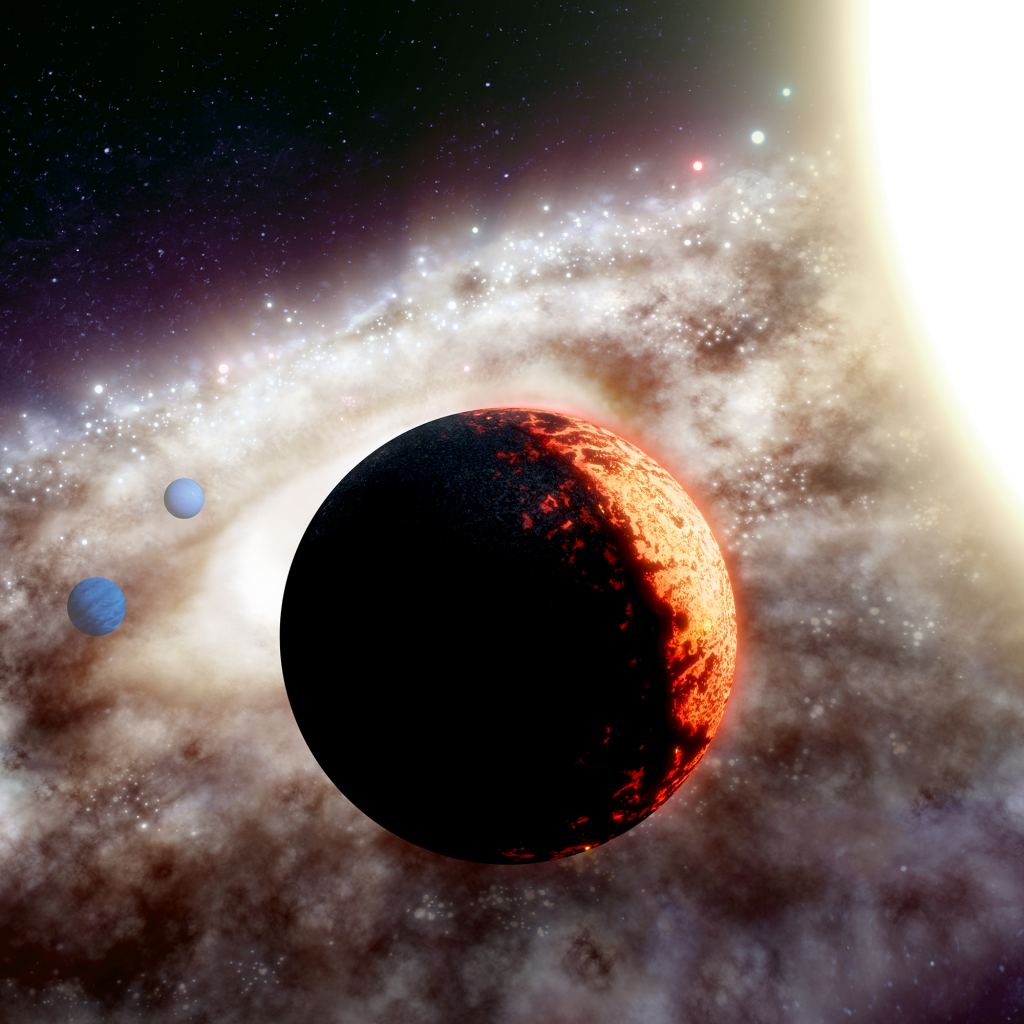In just nine months (October 31st, 2021), NASA’s long-awaited James Webb Space Telescope (JWST) will finally be launched to space. Once operational, this next-generation observatory will use its powerful infrared imaging capabilities to study all kinds of cosmological phenomena. It will also be essential to the characterization of extrasolar planets and their atmospheres to see if any are habitable.
In anticipation of this, astronomers have been designating exoplanets as viable candidates for follow-up studies. Using data from the Transiting Exoplanet Survey Satellite (TESS), an international team led by MIT researchers discovered four new exoplanets orbiting a Sun-like star about 200 light-years from Earth. This system could be an ideal place for James Webb to spot a habitable planet.
The study that describes the team’s findings (which was led by Tansu Daylan of the MIT Kavli Institute for Astrophysics and Space Research) recently appeared in The Astronomical Journal and was also the subject of a presentation made at the 237th meeting of the American Astronomical Society. Due to pandemic restrictions, this year’s AAS meeting was a virtual event that took place from Jan 10th – 15th online.

Four, No, Five Planets!
The team found the four-planet system when examining HD 108236 – aka. TESS Object of Interest 1233 (TOI -1233) – a G-type (yellow dwarf) star located 210 light-years from Earth. After combining TESS transit data with reconnaissance, Doppler spectroscopy, and high-resolution imaging from ground-based telescopes, they determined that a system of no less than four planets orbited this star.
These include a large, rocky inner planet (aka. a super-Earth) and three gaseous outer planets that are slightly smaller than Neptune (mini-Neptunes). Compared to the Solar System, all five planets orbit very closely to their Sun – ranging from 0.046 AU to 0.14 (4.6 to 14% the distance between Earth and the Sun) – and have orbital periods of just under four days to nineteen and a half.
As a result, Daylan and his team estimate that they experience surface temperatures ranging from 370 to 815 °C (700 to 1,500 °F). A day later, another international team announced the discovery of a fifth exoplanet using data from the ESA’s CHaracterising Exoplanet Satellite (CHEOPS). This planet is another Super-Earth that orbits rather closely to its parent star (0.17 AU) and has orbital period of 29 days.
Therefore, it’s unlikely any of them could host life (as we know it), but the planets remain a viable candidate for follow-up observations. Because all four planets in this system have short orbital periods, it will give astronomers plenty of opportunities to study them closer when they pass in front of their star (aka. transit) relative to observatories.

Candidates for Future Study
Like its predecessor, the Kepler Space Telescope, TESS observes stars for periodic dips caused by transiting planets (aka. the Transit Method). This method is currently the most effective means of detecting exoplanets and can also yield reliable information on their orbital periods and size. In addition, it can also yield information on an exoplanet’s atmosphere.
This occurs when light from a star passes through a planet’s atmosphere relative to the observer, which can provide spectra that astronomers can use to determine its chemical composition. In short, this data can reveal whether or not a planet has an atmosphere that includes oxygen, water vapor, carbon dioxide, methane, etc., and is therefore capable of supporting life as we know it.
Although TESS doesn’t have the necessary instrumentations to characterize atmospheres, the telescope plays a very important role in exoplanet studies. Like its predecessor, the Kepler Space Telescope, TESS is responsible for identifying exoplanets that will atmospheric study by higher-resolution telescopes (like NASA’s Hubble Space Telescope) and next-generation telescopes like JWST, the Nancy Grace Roman space telescope, and others.
Given its proximity to Earth, TOI-1233 appears particularly bright in the night sky compared to other stars at a similar distance. In fact, it is the brightest Sun-like star in proximity to the Solar System and will provide ample light for its system of exoplanets, which means astronomers will have a better chance of obtaining spectra.

As Daylan explained, this makes TOI-1233 an ideal case for observations using next-generation instruments:
“With multi-planetary systems, you’re kind of hitting the jackpot. The planets originate from the same disk of matter around the same star, but they end up being different planets with different atmospheres and different climates due to their different orbits. So, we would like to understand the fundamental processes of planet formation and evolution using this planetary system, which acts as a controlled experiment.”
In particular, multi-planet systems (especially those orbiting Sun-like stars) present opportunities for astronomers to learn more about how our own system of planets formed and evolved over time. Given the speed at which the five planets were discovered, it’s also possible that TOI-1233 has even more planets just waiting to be discovered, maybe even ones orbiting within its habitable zone (HZ).
With the James Webb scheduled to launch this coming October, we won’t have to wait long to find out!
Further Reading: MIT News, The Astronomical Journal

